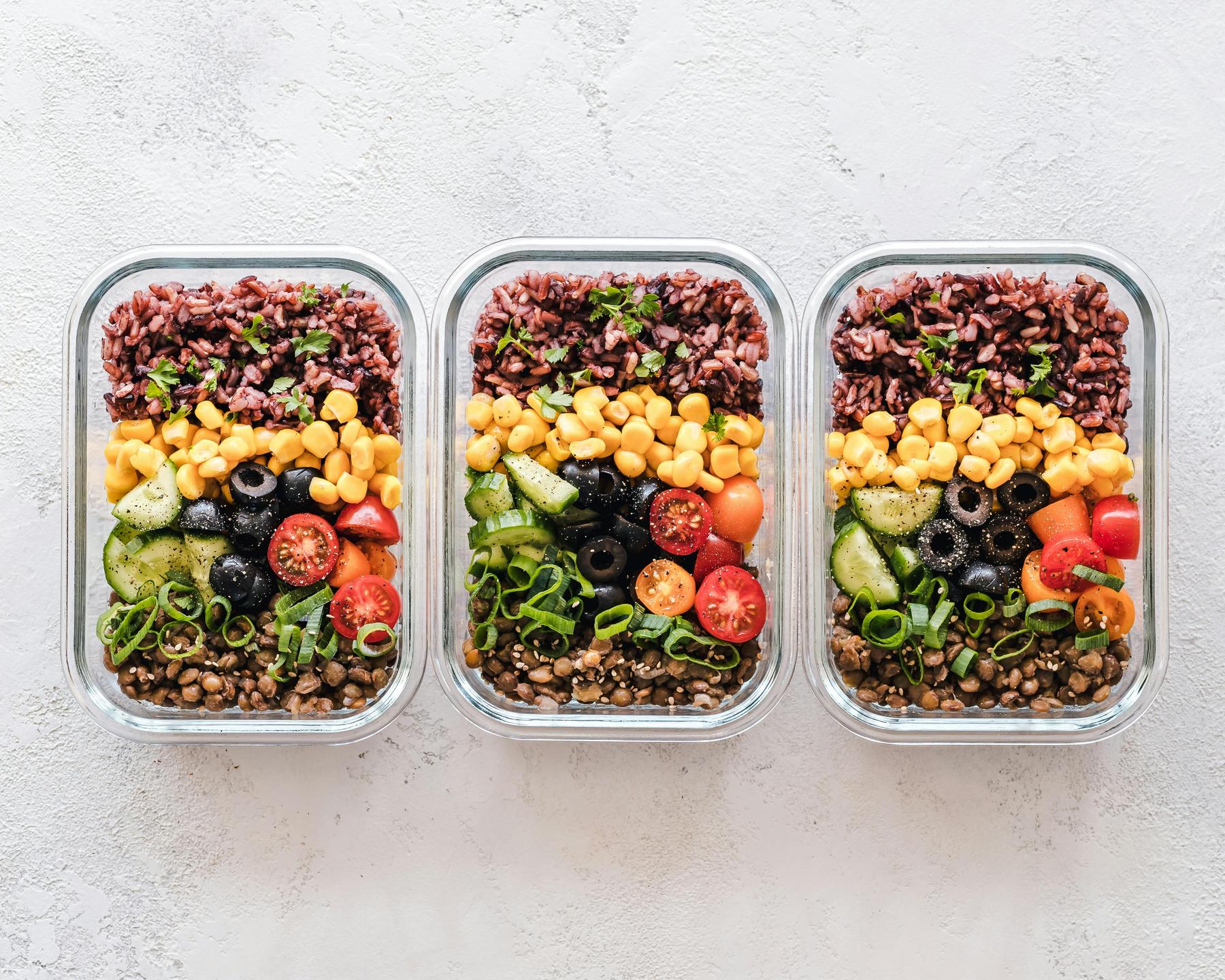In an era where dietary choices increasingly reflect both health consciousness and environmental awareness, the semi-vegetarian diet has emerged as a compelling middle ground. This flexible approach—often called the flexitarian diet—strategically combines the nutritional advantages of plant-based eating with moderate amounts of animal proteins. For Australians navigating the complex landscape of dietary recommendations in 2025, semi-vegetarianism offers a pragmatic solution that supports metabolic health, sustainable weight management, and reduced environmental impact without requiring complete elimination of familiar foods.
What Exactly Is a Semi-Vegetarian Diet?
A semi-vegetarian diet occupies the nutritional spectrum between strict vegetarianism and conventional omnivorous eating. Unlike more rigid dietary frameworks, this approach embraces flexibility while systematically reducing animal product consumption. Semi-vegetarianism operates on a continuum with varying implementation levels:
- Beginner level: Incorporating 6-8 meatless meals weekly
- Advanced level: Consuming 9-14 meatless meals weekly
- Expert level: Including 15+ meatless meals weekly
The defining characteristic of semi-vegetarianism is its emphasis on plant-predominant nutrition without completely eliminating animal proteins. Research indicates that semi-vegetarians typically derive 37-83% of their protein from plant sources, with the remainder coming from strategically selected animal products. This balanced approach creates a protein intake range of 10-17.4% of total calories—well within healthy dietary guidelines.
The semi-vegetarian framework recognizes that dietary change exists on a continuum rather than requiring an all-or-nothing approach. This flexibility makes it particularly suitable for individuals seeking gradual, sustainable dietary modifications aligned with both personal health goals and broader ecological considerations.
How Does a Semi-Vegetarian Diet Compare to Other Eating Patterns?
When examining dietary patterns across the plant-based spectrum, semi-vegetarianism occupies a distinctive position that offers unique nutritional advantages:
| Dietary Pattern | Plant Protein Percentage | Primary Plant Protein Sources | Adherence Rate |
|---|---|---|---|
| Semi-Vegetarian | 37-83% | Legumes, whole grains, nuts (60-78%) | 96.1% |
| Vegetarian | 83-98% | Legumes, grains, dairy alternatives | 86.7% |
| Vegan | 98-100% | Legumes, grains, soy products (17.3%) | 68-75% |
| Standard Omnivore | 15-30% | Incidental plant proteins | Not applicable |
This comparative analysis reveals key distinctions: semi-vegetarians maintain significantly higher adherence rates than stricter plant-based regimens while achieving many similar health benefits. The semi-vegetarian model uniquely leverages both animal proteins’ complete amino acid profiles and plants’ phytonutrient diversity.
Research shows this balanced approach offers substantial health advantages, including a 22% reduction in inflammatory markers and 14% lower LDL cholesterol compared to conventional omnivorous diets. Additionally, semi-vegetarians demonstrate approximately 3.2% lower hepatic fat content than conventional omnivores—an improvement independent of weight changes that suggests metabolic benefits beyond simple calorie reduction.
What Makes Protein Balance Important in Semi-Vegetarian Diets?
Protein adequacy and quality represent foundational considerations for any dietary pattern. While traditional nutritional wisdom emphasized animal proteins for their “complete” amino acid profiles, contemporary research has largely debunked concerns about protein deficiency in predominantly plant-based diets.
The key to protein optimization in semi-vegetarian eating lies in strategic complementarity. While animal proteins naturally contain all nine essential amino acids in proportions matching human requirements, plant proteins can achieve equivalent completeness through thoughtful combinations. For instance:
- Grains (limited in lysine but rich in methionine) pair effectively with legumes (rich in lysine but limited in methionine)
- Seeds and nuts complement vegetables to create comprehensive amino acid profiles
- Even modest inclusions of animal proteins (e.g., 26 oz weekly at the beginner semi-vegetarian level) significantly bolster overall amino acid balance
Current nutritional science confirms that consuming varied plant sources throughout the day—rather than strict meal-by-meal combining—sufficiently meets amino acid requirements for most individuals. This understanding provides semi-vegetarians with considerable flexibility in meal planning while maintaining protein adequacy.
Beyond protein composition, semi-vegetarian diets address key micronutrient considerations that often challenge stricter plant-based approaches:
- Iron absorption: Plant-sourced non-heme iron exhibits 15-35% lower bioavailability than heme iron from animal sources. However, semi-vegetarians mitigate this differential through occasional meat consumption and strategic pairing with vitamin C-rich foods, which can enhance iron absorption by 2-3 fold.
- Omega-3 fatty acids: While fatty fish provide preformed EPA/DHA, semi-vegetarians can obtain alpha-linolenic acid from plant sources like flaxseed (2.4g/tbsp), chia seeds (5g/oz), and walnuts (2.6g/oz), supplemented by occasional marine sources.
- Vitamin B12: Regular inclusion of eggs, dairy, or fortified foods prevents deficiency risks prevalent in vegan diets.
This balanced approach to micronutrient intake represents one of semi-vegetarianism’s key advantages over more restrictive dietary patterns.
How Does a Semi-Vegetarian Diet Support Weight Management?
Longitudinal studies consistently demonstrate that semi-vegetarians achieve 3-5% greater weight loss than conventional omnivores, driven by multiple physiological mechanisms:
- Enhanced satiety through fiber intake: Plant-rich semi-vegetarian diets typically provide 25-40g daily fiber compared to approximately 15g in standard Western diets. This additional fiber, particularly soluble varieties, delays gastric emptying and stimulates GLP-1 secretion, effectively reducing hunger sensations by 12-18%.
- Thermogenic advantage: Digesting plant proteins requires 20-30% of their caloric content versus just 5-15% for fats. For semi-vegetarians consuming higher proportions of plant proteins, this differential can yield an extra 60-90 kilocalories of daily energy expenditure without additional activity.
- Microbiome modulation: The high-fiber intake characteristic of semi-vegetarian eating elevates beneficial Bacteroidetes:Firmicutes ratios in gut bacteria populations. This shift decreases fat absorption by 7-12% through enhanced butyrate production and other metabolic pathways.
The PREDITION trial revealed that semi-vegetarians achieve comparable cardiovascular and weight management benefits to strict vegetarians, while maintaining significantly higher adherence rates (96.1% versus 86.7%). This finding underscores a critical advantage of semi-vegetarianism: its sustainability as a long-term dietary pattern rather than a temporary intervention.
How Can I Implement a Balanced Semi-Vegetarian Diet?
Successful implementation of a semi-vegetarian diet involves strategic meal planning that prioritizes plant proteins while incorporating modest amounts of high-quality animal products. A practical daily framework might include:
- Breakfast: Oatmeal with chia seeds (10g protein) plus a hard-boiled egg (6g protein)
- Lunch: Quinoa salad with chickpeas (15g protein) plus a small portion of grilled chicken (26g protein)
- Dinner: Stir-fried tempeh (15g protein) with brown rice (5g protein) and steamed vegetables
This example provides approximately 77g protein for a 70kg individual, meeting the recommended 1.1g/kg protein intake while maintaining approximately 65% plant-based protein sources.
To overcome common nutritional challenges in semi-vegetarian eating:
- Optimize iron intake: Pair iron-rich plant foods like lentils with vitamin C sources such as tomatoes. Consider cooking acidic foods in cast-iron cookware, which can increase iron content by 2-5mg per meal.
- Address omega-3 needs: Incorporate approximately 30g walnuts daily plus a weekly serving of fatty fish (150g provides approximately 1.8g EPA/DHA).
- Ensure vitamin B12 adequacy: Include eggs, dairy products, or B12-fortified plant milks and nutritional yeast regularly.
By thoughtfully implementing these strategies, semi-vegetarians can achieve nutritional completeness while progressively reducing animal product consumption according to personal preferences and goals.
The Environmental and Ethical Dimensions of Semi-Vegetarianism
Beyond personal health considerations, semi-vegetarian diets offer substantial environmental benefits. Plant proteins generate 10-50 times lower greenhouse gas emissions than beef production, and even modest dietary shifts create meaningful ecological impacts. Research demonstrates that replacing just 50% of red meat consumption with legumes reduces an individual’s dietary carbon footprint by approximately 35% while preserving cultural food practices and preferences.
From an ethical perspective, semi-vegetarianism emphasizes reduction over complete elimination—aligning with principles of harm minimization. By limiting meat consumption to 3-4 weekly servings, preferably from welfare-certified sources, individuals can reconcile health goals with animal welfare considerations in a pragmatic manner.
The Semi-Vegetarian Advantage: Flexibility Meets Nutrition
The semi-vegetarian diet represents a nutritionally complete and socially sustainable model that reconciles traditional dietary patterns with contemporary health imperatives. By harnessing plant proteins’ metabolic benefits while judiciously incorporating animal sources, this approach addresses a fundamental dietary challenge—reducing meat consumption without sacrificing nutritional adequacy or cultural food traditions.
The flexibility inherent in semi-vegetarianism supports long-term adherence, making it particularly valuable for individuals seeking sustainable dietary change. Rather than demanding abrupt elimination of familiar foods, this approach encourages progressive shifts toward plant predominance while maintaining the occasional inclusion of high-quality animal proteins.
For Australians navigating dietary choices in 2025, semi-vegetarianism offers a practical framework that aligns with both individual health objectives and broader ecological considerations. By thoughtfully balancing plant and animal proteins, this dietary pattern supports optimal nutrition while accommodating personal preferences and cultural food traditions.
Can a semi-vegetarian diet provide enough protein?
Yes, a well-planned semi-vegetarian diet easily provides sufficient protein for most individuals. Research shows that semi-vegetarians typically consume 10-17.4% of their total calories from protein, aligning with recommended intake ranges. By incorporating a variety of plant protein sources along with strategic amounts of animal proteins, one can achieve an optimal amino acid profile.
How does semi-vegetarianism impact weight management?
Semi-vegetarian diets support effective weight management through several mechanisms including enhanced satiety due to higher fiber intake, a thermogenic advantage from digesting plant proteins, and positive modulation of the gut microbiome. These factors contribute to observed weight loss benefits of 3-5% greater than conventional omnivorous diets.
What are the key nutrients to monitor on a semi-vegetarian diet?
Key nutrients include iron, omega-3 fatty acids, and vitamin B12. Iron from plant sources has lower bioavailability, so it should be paired with vitamin C-rich foods. Omega-3s can be sourced from flaxseeds, chia seeds, walnuts, and occasional fatty fish, while vitamin B12 is maintained through eggs, dairy, or fortified foods.
How can I transition to a semi-vegetarian diet gradually?
A gradual transition is often most sustainable. Start by designating 2-3 meatless days per week, then gradually increase plant-based meals as you become more comfortable with new recipes and ingredients. Experiment with integrating plant proteins like lentils, chickpeas, and tofu into your regular meals while gradually reducing red meat consumption.



